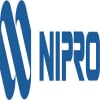Large drugmakers spent much of the past decade attempting to mimic their nimbler biotech peers, slimming down their businesses and narrowing the focus of their laboratories in hopes of churning out new medicines more efficiently.
An unusual new company, launched Tuesday with $250 million in funding, plans to try a different approach to achieving the same goal. Created from a merger of 10 startups backed by U.K. life sciences investment firm Medicxi, Centessa Pharmaceuticals aims to build the infrastructure of a larger drugmaker around each of its component companies, which will be run as largely autonomous subsidiaries.
The unorthodox arrangement reflects the vision of Medicxi, which has advocated for a leaner, "asset-centric" approach to developing drugs. The companies Medicxi helps fund are built around just one or two medicines, or a specific disease pathway, rather than broad pipelines of experimental compounds spanning multiple areas of research.
Centessa — an amalgamation of the "cen" in centric and asset spelled backwards — is a bet by Medicxi that its strategy can be supercharged by pooling the resources each company can call upon for support.
"The playbook of 'asset centricity' has worked well for single-asset biotech companies," said Saurabh Saha, Centessa's new CEO and formerly a senior R&D executive at Bristol Myers Squibb. "We asked ourselves the question, 'Can we scale this company to that of a larger pharma company?"
Saha will be joined at Centessa by Moncef Slaoui, the former GlaxoSmithKline executive and leader of the U.S. government's Operation Warp Speed program for coronavirus vaccines. Slaoui, whose last day as Warp Speed's head was Friday, is a partner at Medicxi and will serve as chief scientific officer and adviser to Centessa.
At GSK, where he led R&D from 2006 to 2014, Slaoui worked to break down the pharma's sprawling research and development organization into smaller, more focused units, an effort he describes as "repersonalizing R&D."

"The essence was the same as asset centricity," Slaoui said. "We created conditions for scientists to really own their program, to be the decision makers and to localize decisionmaking [to people who have] the highest depth of understanding."
With Centessa, Saha and Slaoui will attempt something similar, but starting with individual biotechs as building blocks for a larger whole.
The companies merged into Centessa are mostly U.K.-based and between two and five years old. They also received modest financial backing in early funding rounds that involved Medicixi. The companies include ApcinteX, Capella Bioscience, Janpix, Lockbody, Morphogen-IX, Orexia Therapeutics, Palladio Biosciences, PearlRiver Bio, Pega-One and Z Factor.
"Our goal is to allow these companies to operate as autonomously as possible," said Saha. "Now these companies have access to greater capital and centralized resources as well as the benefits of scale."
One of those benefits, according to Slaoui, is that by banding 10 companies together, Centessa will be better able to negotiate research and manufacturing support from the drug contractors that often do the legwork for smaller biotechs.
All together, the 10 companies are developing 15 different programs — four of which are in clinical stages — for a wide range of diseases spanning oncology, hematology, immunology, inflammation and neuroscience. Despite the companies' European roots, Centessa will be headquartered in Cambridge, Mass, where some of its leadership will be based.
The subsidiaries will retain their existing teams; all told, Centessa will have about 150 staff across the 10 companies.
Centessa's approach has some similarities with the hub-and-spoke models set up by drug developers like BridgeBio, PureTech Health and Roivant Sciences, a parallel Slaoui acknowledged. But he drew a distinction in how Centessa was put together. "We didn't go acquire a company with a pipeline, then another one and another one, and then pool resources with new management," he said.
Both the investor syndicate supporting Centessa and the funds they committed are unusually large for a Series A round. The $250 million financing ranks among the top Series A rounds in the biotech industry in recent years.
General Atlantic led Centessa's financing, along with Vida Ventures and Janus Henderson Investors. A dozen other venture and investment firms joined in.
The money will be available for investment in Centessa's subsidiaries based on the promise of the data they generate in testing. But Saha and Slaoui intend to empower the teams running each company. "The risks, frankly, are that we micromanage or that we alter the scientific red line of each of these projects in a way that's misinformed," said Slaoui.
Slaoui's recent experience running Operation Warp Speed was a lesson in the kind of decisionmaking he hopes to apply to Centessa, he said.
When appointed as scientific leader of the program in May, Slaoui had to choose among nearly 100 different vaccine candidates being advanced in preclinical or early-stage clinical testing. Among the six he selected, two — vaccines developed by Moderna and partners Pfizer and BioNTech — are now authorized by the Food and Drug Administration. A third, from AstraZeneca and the University of Oxford, is cleared by regulators elsewhere and two more were shown to be protective against COVID-19 in Phase 3 studies.
The last, from Sanofi and GlaxoSmithkline, disappointed and has been delayed.
Operation Warp Speed "picked the winners more often than not, despite political turmoil, which didn't deter us from making the decisions on the data," Slaoui said. "That's the philosophy that we will apply."




















